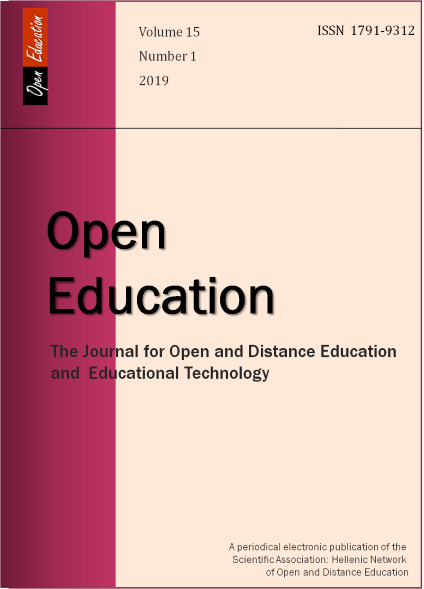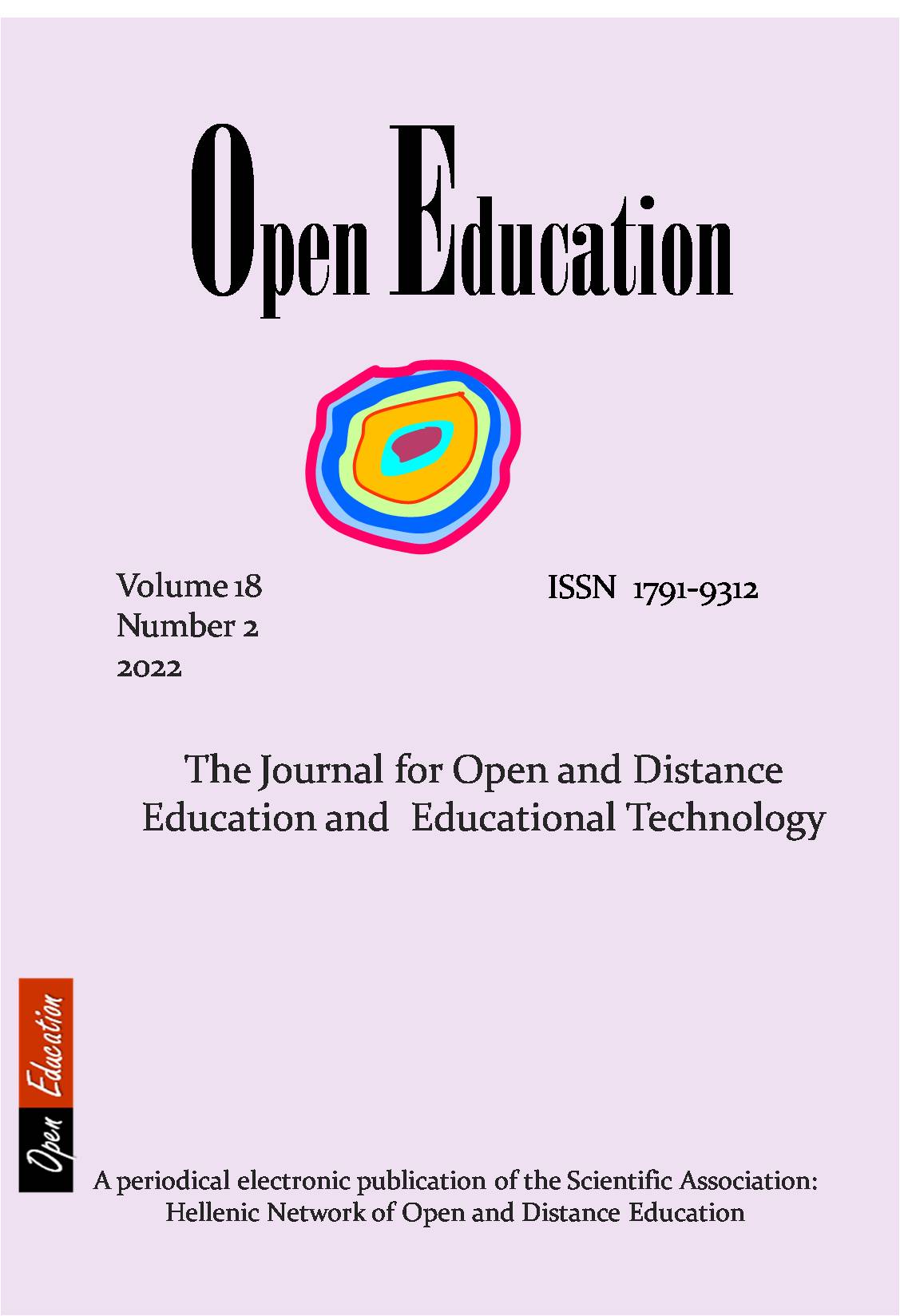Teaching plants' growth processes to primary school students using tablets. Results from a pilot project

Abstract
In general, students face quite a lot of problems in science courses. The above holds true when plants are the teaching subject. Students', as well as adults', interest and knowledge level regarding plants is minimal, while misconceptions regarding them are a commonplace. Coming to plants' growth processes (i.e., photosynthesis, respiration, and transpiration) they can hardly understand them. For example, they think that plants get their food from the soil, through the roots and photosynthesis is not involved at all, or that the sunlight is good for plants' health. The Greek primary school curriculum includes units related to plants but these are few, scattered, and not well organized. To make things even worse, teachers' understanding of science concepts (including plants' growth processes) is problematic, forcing them to use the school textbooks as their only source of information on one hand, and, on the other, to resort to ineffective conventional teaching methods.
There is a common consensus that technology can offer interesting and quite effective solutions for overcoming the disadvantages of conventional teaching. In recent years, the emergence of mobile devices (e.g., tablets and smartphones) gave rise to what is called "mobile learning". In essence, mobile learning supports the notion that mobile devices allow learning to take place anytime and anywhere and provides ideas on how one can utilize mobile devices in education. An interesting category of mobile applications is that of augmented reality (AR). AR is a technology which mixes, in real time, the real world with virtual objects, multimedia elements, and information, while the user can interact with the above. There is a fairly extensive literature regarding the effectiveness of mobile devices and AR applications; better learning outcomes, better visualization of complex phenomena, fun and enjoyment, increased motivation for learning, increased personalized, as well as collaborative learning, opportunities for continuous self-assessment, greater autonomy, and control over one's learning process, are some of their advantages. The above also apply when the teaching subject is related to science courses. Then again, the learning outcomes were not always that good and, in some cases, the results were negative. Also, a number of problems have been reported that can act as barriers to the successful integration of mobile devices in education. For example, students' cognitive overload due to the overuse of multimedia features and students to tablets ratio are causes of concern. A major problem is the lack of educationally sound applications together with the difficulties that educators face when they try to develop their own applications. The need for a well-developed pedagogy that will allow a better utilization of mobile devices has also been highlighted.
Having in mind the above, it was considered an interesting endeavor to examine whether a teacher who possesses basic ICT skills can successfully use the available tools for developing AR applications tailored to the needs of his/her class and to examine whether these applications can achieve positive learning outcomes within a context of increased students' autonomy. As a result, a pilot project was designed and implemented, in which tablets and micro-applications with augmented reality features were used for teaching plants' growth processes to 6th-grade primary school students (ages 11-12). Four two-hour sessions were allocated for this matter (plants' structure, photosynthesis, respiration, and transpiration). The corresponding micro-applications were developed by the class's teacher using Blippbuilder, an easy to use online platform for developing AR applications without programming. It is worth noting that she did not receive any technical or pedagogical guidance throughout the developing process. In addition, a short handbook was written which included the exact same learning material that the applications had. Activities and worksheets were also produced. The sample was 60 students divided into three groups. The first group was taught conventionally; the printed material was used, students worked by themselves, and the teacher had increased control over the teaching process. This method reflected an everyday/typical instruction. Instruction to the second and third groups relied on Driver's and Oldham's model and students worked in pairs. The differences between these two groups were that one used the printed material and the teacher acted as a facilitator of the learning process, while the other used tablets and students had almost total control over their learning process because the teacher provided only technical assistance. Data were collected through evaluation sheets. In addition, a questionnaire was administered to the third group for recording the students' views regarding the use of tablets.
The data analyses revealed that there were no statistically significant differences among the three groups regarding their performance. However, a strong motivation for learning and a positive attitude of students towards the use of tablets were noted. Viewing the results as a failure of tablets and their applications to yield better learning outcomes compared to printed material is somewhat inappropriate for a number of reasons. First, the teaching/learning subject was difficult. Indeed, all groups had quite low scores in all the evaluation sheets. Second, it would be unrealistic one to expect good results in just a few sessions and in a short period of time. Also, one has to be reminded that in the group that used tablets, students worked by themselves without receiving any help from their teacher. Despite this disadvantage, the learning outcomes in this group were equal to the ones of the other two groups. Coming to the results in the questionnaire, increased fun and enjoyment were noted, that act as motivational factors. Indeed, motivation (as recorded in the relevant questions) was also high. Thus, it can be argued that fun, enjoyment, and motivation to learn, counterbalanced the lack of teacher's guidance. On the other hand, the applications per se, may have acted as a negative factor. That is because they were "amateurish", having both technical and pedagogical problems, which probably caused problems to students, leading to a negative impact on their learning outcomes.
The limited number of sessions and the relatively small sample size do not allow the generalization of the results. Larger sample sizes, different age groups, and a wider variety of subjects can provide more sound results. Quantitative together with qualitative data collection methods will allow the better understanding of the benefits that tablets bring to education. Despite the above limitations, the results were interesting and thought-provoking, leading to the need for further examination on how tablets can be integrated into schools.
Article Details
- How to Cite
-
Αργυρού Τ., & Φωκίδης Ε. (2019). Teaching plants’ growth processes to primary school students using tablets. Results from a pilot project. Open Education: The Journal for Open and Distance Education and Educational Technology, 15(1), 40–56. https://doi.org/10.12681/jode.18548
- Issue
- Vol. 15 No. 1 (2019)
- Section
- Section 1
Copyright Notice
Authors who publish with this journal agree to the following terms:
Authors retain copyright and grant the journal right of first publication with the work simultaneously licensed under a Creative Commons Attribution Non-Commercial License that allows others to share the work with an acknowledgement of the work's authorship and initial publication in this journal.
Authors are able to enter into separate, additional contractual arrangements for the non-exclusive distribution of the journal's published version of the work (e.g. post it to an institutional repository or publish it in a book), with an acknowledgement of its initial publication in this journal.
Authors are permitted and encouraged to post their work online (preferably in institutional repositories or on their website) prior to and during the submission process, as it can lead to productive exchanges, as well as earlier and greater citation of published work.




